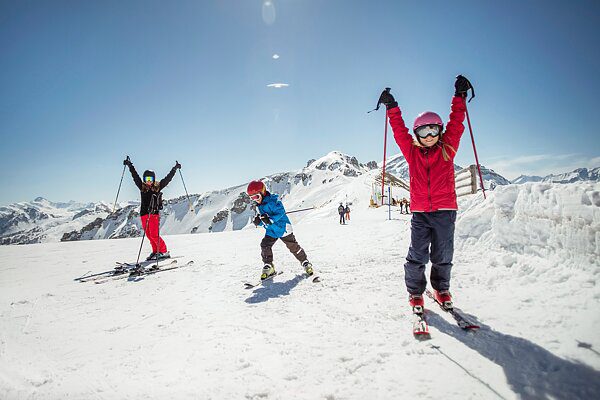Winter sports fans will have to dig deep into their pockets this year. The prices for ski passes are increasing by 10 percent and more in many places. This is also due to the sharp increase in energy costs. We compared Austrian and German regions and found ski resorts with moderate prices.
17 ski areas in comparison
The prices for day tickets and for six days of skiing in the most expensive season can be compared in our table. We have selected Austria’s eight ski areas with the most kilometers of slopes, as well as three medium-sized, comparatively cheap alternatives, namely Alpbachtal, Obertauern and Nassfeld. The table also shows the prices for important German ski areas in the Alps, the Pre-Alps, in the Black Forest and in the Sauerland.
Alpbachtal significantly cheaper than Sölden
In Sölden, the six-day pass is particularly expensive at 390 euros. In the not much smaller Alpbachtal in Tyrol, vacationers only pay 284 euros – that is 106 euros less. Ischgl and Serfaus-Fiss-Ladis in Austria offer many kilometers of pistes for less than 300 euros.
In Germany it is cheaper
The ski areas in Germany are not quite as huge, but they are often cheaper. Winter sports enthusiasts can ski down the slopes in Winterberg in the Sauerland and in Balderschwang in the Allgäu at comparatively low prices. Six days of skiing fun cost 176 euros and 197 euros here.
Save money in small ski resorts
Even in Austria, it doesn’t always have to be superlative ski areas. Novice drivers and families with children can search specifically for small areas with less than 50 kilometers of pistes. There are enough exercise facilities and they are often much cheaper than the big ones. By the way: Tickets, whether for large or small ski areas, often cost a few euros less online than on site.
Less artificial snow saves energy
The energy crisis is also affecting the ski areas. According to the Association of German Cable Cars, every winter sports enthusiast uses an average of 16 kilowatt hours per day of skiing, including cable car and slope preparation. That corresponds to a 22-kilometer drive in a mid-size car.
Above all, it is energy-intensive to artificially snow slopes. The operators of the Kitzbühel, Saalbach and Garmisch Classic ski areas are therefore planning to use their snow cannons to a lesser extent in the 2022/23 season. In some cases, the amount of snow or the width of the slopes should be reduced.
Cold seats, more solar
In Garmisch, the seat heating in the lifts remains off, in Saalbach the same applies to -10 degrees outside temperature. Saalbach and Kitzbühel want to throttle the speeds of the cable cars depending on the rush. Other measures relate to room temperatures, hot water and lighting. The Kitzbühel Kitzski ski area wants to save a total of 10 percent in energy costs. Many areas are also relying on more photovoltaics.
Arrive by train and save
Traveling to and from the destination on a winter holiday usually consumes more energy than days skiing on the slopes. This is shown by our model calculation for a week’s winter holiday in Tyrol: If the example couple from Berlin takes the train to the mountains instead of the car, it reduces the CO2 emissions of the trip by almost 65 percent.
Several Swiss ski areas reward the environmentally friendly arrival. They give train passengers a discount of up to 20 percent on ski passes. Courses and equipment are also sometimes cheaper for winter sports enthusiasts who rely on the train.
